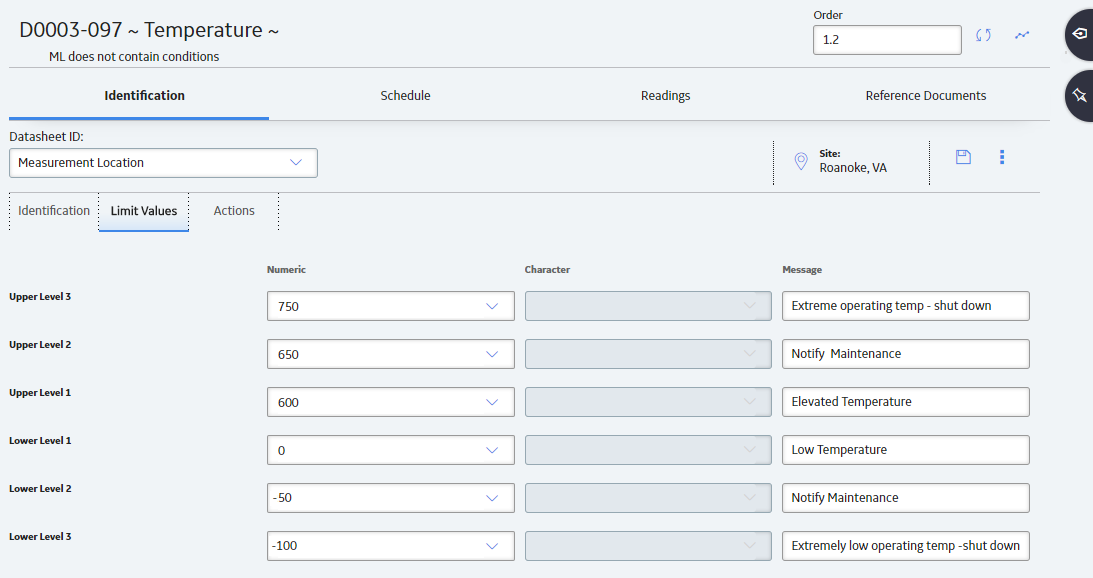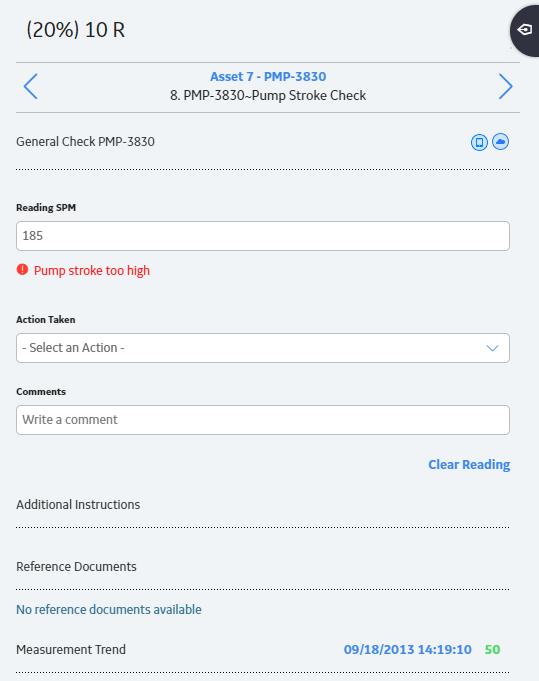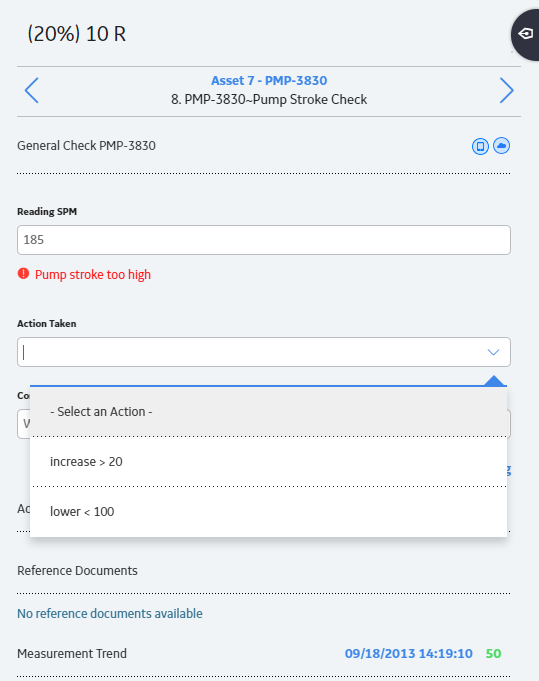Suppose a checkpoint requires a temperature check and accepts numeric reading values. If you do not define allowable values in the Identification section of the datasheet for Measurement Location, users can enter any reading value on the device. You might want to define these allowable values so that an alert will be sent if the temperature falls below a certain temperature or rises above a certain temperature.
In the following image, you can see that values have been defined for Upper Level 3, Upper Level 2, Upper Level 1, Lower Level 1, Lower Level 2, and Lower Level 3 limits.

The Upper Level 3 value of 750 indicates that if a reading value is greater than or equal to 750, an alert will be displayed with the message Extreme operating temp - shut down, as specified by the value in the Message cell.
Note: The values in the list Action Values tab on the device will be displayed in the order in which they appear (from top to bottom) in the Action column on the Limit Values tab.
When you are working with lower-level values, keep in mind that any reading that is less than or equal to the value will trigger the alert. Likewise, when working with upper-level values, keep in mind that any reading that is greater than or equal to the value will trigger the alert.

